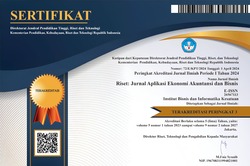SOCIAL HEALTH INSURANCE ADMINISTRATION BODY PARTICIPANTS’ SATISFACTION ON DECISION TO USE MOBILE JKN APPLICATION
DOI:
https://doi.org/10.37641/riset.v6i1.2070Keywords:
Mobile JKN, EDM, SEMAbstract
Mobile JKN is an application developed by Social Health Insurance Administration Body to provide easy access to information about the National Healthcare Insurance Program (JKN Program). The number of participants in the Social Security Agency on Health (BPJS Health) has almost reached 250 million people. The government must manage public services so Social Security Agency on Health participants can access health facilities conveniently. The study aims to analyze the Social Security Agency on Health participants’ satisfaction with the decision to use the Mobile JKN application using the Expectancy Disconfirmation Model (EDM). EDM described how perceived expectations and performance influence public satisfaction. The study method is quantitative, with the study unit being Social Security Agency on Health participants and locus in Bogor. Structural Equation Modeling (SEM), a multivariate data analysis technique, was used in this study to examine the data and assess the intricate relationships between the constructs and indicators. The data processing technique uses SmartPLS. The finding shows that using the mobile JKN application has positively impacted user satisfaction. The Social Security Agency on Health participants were satisfied after utilizing the Mobile JKN application to access healthcare services.







